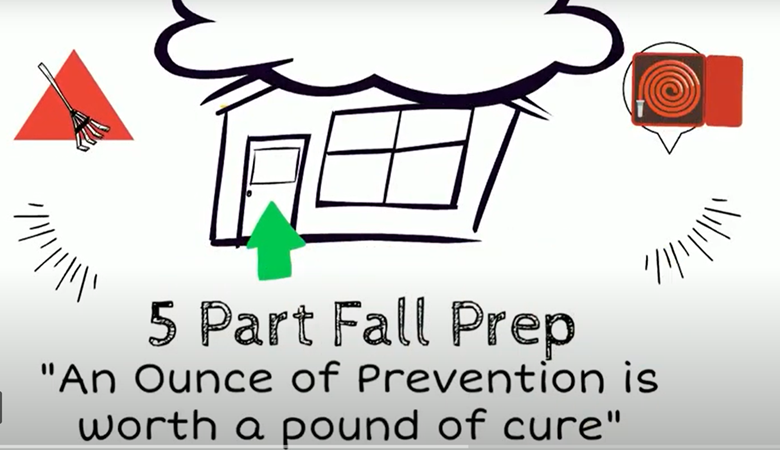1. BUILDING OUTSIDE:
- Plants: Trim away any trees or bushes which are in contact with the structure.
- Windows & Doors: physically look at the caulking does not have holes or cracks. The caulking is squishy stuff that connects the door or window to the wall on the outside of a building.
- Garage & Warehouse doors: take a look at the hinges, and confirm that they are securely attached to the door. Test the auto-stop mechanisms. Many garage door openers use an electronic eye to automatically reverse the garage door if an obstruction is in the way. Many also have a pressure reverse when contact is made with an obstruction. Both of these are good to confirm proper function.
- Roof & Gutters (only when possible): look at any points where metal and pipes are going through or connected to the roof. Confirm there are no blockages for weather or water, and in good condition.
2. WATER FLOW:
- pull debris from the gutters and whatever devices are used to move water from your building, and direct the water to at least 3 — 5 feet away from the foundation.
- A building with a sump pump is a building which could partially fill up with water. It’s one thing to keep water off the outside of your house, but filling a building up with water can be destructive. Test it, to be sure your sump pump is fully operational.
- Winterize your sprinkler system before the first freeze.
- Disconnect water hoses: Any external faucets with a hose connected to them typically require disconnection, and being readied for winter temperatures. Remember to turn off the water flow before disconnecting the faucet/hose. Otherwise you may need a change of clothes, and a towel.
- Erosion check: physically look at the foundation. and check to confirm that the ground slopes away from your building. Pooling water in contact with a building’s foundation is usually the start to a long term serious problem. Another way to recognize water around a foundation is to look in the crawlspace or basement and see if there are any points of moisture in the soil or moisture coming through the wall.
3. FIRE AND AIR:
- Not all houses have working chimneys, but it is good practice to clean a chimney each fall. You are starting a fire in a building, and all the soot building up over time.
- Wood burning fireplace or stove: There is a good reason why we aren’t allowed to build buildings with these types of burning units anymore. If a building has a device which burns wood, have it cleaned and inspected.
- Detectors: Smoke detectors have a test button, as do the Carbon Monoxide detectors. Press the button to make sure they are working properly. Be aware, these are designed to interrupt whatever you are currently doing — so they are quite loud. If you’ve never heard a Carbon Monoxide or Smoke detector before, they can be loud!
4. FILTERS:
- Furnace Forced Air Filter: There is an air filter in your furnace. Chance it once a month. If you’re thinking you haven’t changed it since last year… please move this to the top of your list.
- AC Filters: Most of these have filters. The job of an AC unit is to move air around a building, and dirty filters are like making a marathon runner carry weights. It’s good to keep your filters clean.
- Range Hood filters: If your place has a hood, there is probably a filter for that hood’s directing the air. Replace filters, and check for cleanliness.
- Boiler: Confirm that the pump is oiled. It is true that oiling a boiler is not changing a filter, but this machinery oil like a forced air furnace needs to breath.
5. ELECTRONICS:
- Test reset buttons (Power outlets with the Test & Reset button): The Ground Fault Circuit Interrupters (GFCIs, or GFIs) are commonly where water and electricity may be in contact, but that is not the only place these types of power outlets are used. Wherever there is a power outlet with a reset/test buttons in the middle — push the test buttons to make sure power is no longer going to the outlet when you push test. You can press reset button to make it work again.
- Refrigeration: the process of keeping items cold typically require coils and other dust collecting parts. Cleaning them (at least annually) is a good way to not pay more to make that refrigerator run.
- Drain Swamp Cooler: If you have a swamp cooler, you should know it. These typically have a water line in which needs to be shut off, as well as drained. Swamp coolers also have electricity run to them which needs to be “winterized”, and turned off.
If you thought this was helpful, please subscribe:
If any of these Fall Prep tasks uncover any insurance concerns, we would love to speak with you.
We know our clients by name.
303–388-7216
If you have any insurance questions, let us know & we might do a blog on your topic.

